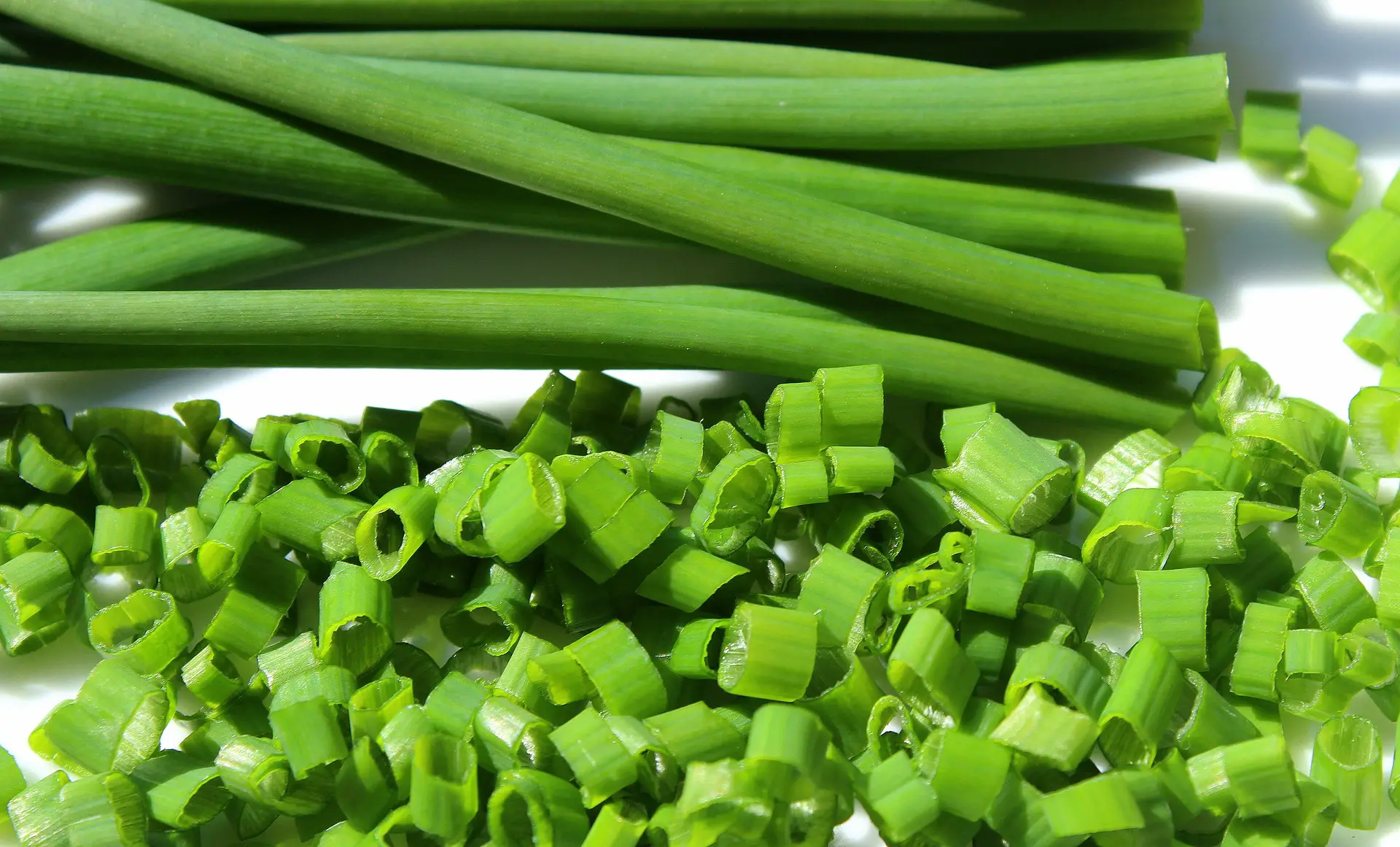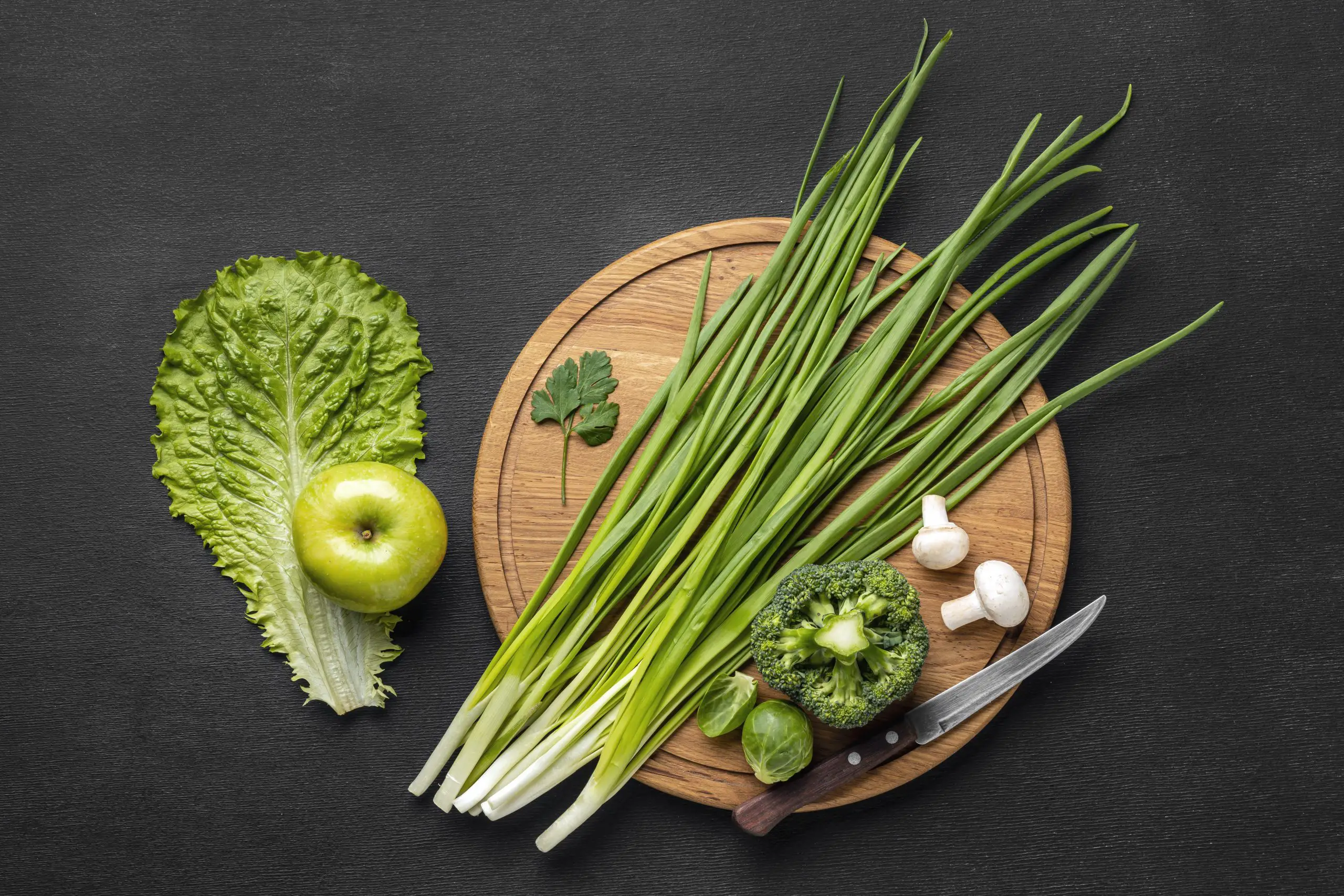Whether you’re planning on freezing chives for your next dinner or just looking to freeze some in your fridge for future use, there are a few different ways to freeze your chives.
Spread the chives out evenly in the ice cube trays’ compartments before adding water to freeze them. When the cubes are frozen, take them out of the trays and place them in a freezer bag. Alternately, put the chopped chives in a single layer on a baking sheet lined with parchment paper.

How to Freeze Chives?
Some of our herbs have been frozen so that we can use them in the wintertime. So far, we have frozen some basil and mint, which we have used in various dishes. We wanted to freeze a large pot of garlic chives next.
Cut a large bunch of chives from the plant to freeze. Cleanly wash the chives, and cut off any stems with breaks. Well-dry on a paper towel
Put the bunch in a Ziploc bag after bundling it with baker’s twine. Freeze the bag after rolling it up to remove any extra air.
Cut off what you need of the chives when ready to use them, then put the rest back in the freezer.
We enjoy using chives in soups, casseroles, and pizza. A supply on hand is a great idea.
How to Freeze Whole Chives?
The simplest method of freezing chives is to do it this way. This strategy should be used if time is of the essence.
First, ensure your chives are entirely clean, especially if you’re gathering them from the garden. Next, make sure they are properly trimmed. Make sure all debris and insects are gone. You can quickly rinse them with cold water, but ensure they are completely dry. Because they are prone to become shriveled, trim the ends.
Put the chives in a freezer bag that can close now. Squeeze out as much air from the bag as you can before sealing it.
Freeze: Put the bag in the freezer, then take out the chives as needed.
How to Freeze Chives in Ice Cubes?
When it comes to freezing chives, this method is preferable. It will make it simple for you to take out what you need and will freeze chives the best way possible without losing flavor:
- Clean and Slice: As before, thoroughly clean your chives. After all, you don’t want to frost them with dirt. Slice them up as you typically would after cleaning. Even with scissors, cutting the chives into little rings is simple.
- Fill Ice Cube Tray: Take an ice cube tray and stuff it about two-thirds full of chives. Olive oil or water should be applied to the chives. Make certain the chives are completely submerged in the liquid.
- Wrap: Cover the tray with cling film before freezing it.
- Freeze: After they have completely frozen, you can remove the cubes from the bag and place them back in the freezer. This will allow you to freeze pesto or other items in your ice cube tray instead.
Using this technique, you can even try making herb blends. Why not try including some rosemary or parsley? Then, stir it in to give stews and soups a real kick of herby flavor.
Can you Freeze Chive Blossoms?
Using chive blossoms in a recipe can add an aromatic and oniony flavor. This flower is part of the Allium family, including onions, garlic, and chives.
Chive blossoms are edible and can be eaten raw or used as a garnish. You can also freeze them for storage. The flowers can be used in sauces, soups, and stews. You can also make chive blossom vinegar. This vinegar is a delicious way to add flavor to your dishes.
Chive blossoms can be found at various grocery stores and farmers’ markets. They can be used in salads, sauces, and potato dishes. They are also excellent as a garnish for drinks. They can be preserved by freeze-drying, drying, and pickling them.
The first step is to wash the chive blossoms. This can be done in cool water to remove dirt and insects. Once the chive flowers are cleaned, they can be dried on a paper towel. Then, they can be placed in a plastic bag to preserve them.
How Long do Frozen Chives Last in the Freezer?
Whether you are planning to add chives to a recipe or want to enjoy them fresh, freezing is a great way to preserve these delicious and versatile vegetables. You can enjoy them in soups and dips for a long time.
The easiest and least labor-intensive way is to freeze them in ice cube trays. You can freeze chives individually or in trays. But, you need to take care not to overfill your tray. Also, be sure to keep the ice cubes as cold as possible. This will reduce the chances of ice crystals forming.
To freeze chives, begin by trimming off any excess roots and stems. Then, cut the chives into half-inch pieces. This will help keep the pieces from clumping.
Once you’ve cut them into half-inch pieces, you’re ready to freeze them. Be sure to freeze the chives in a freezer-safe container. You can also wrap the chives in a damp paper towel. This will keep the moisture in, preventing freezer burn.
How to Thaw Frozen Chives?
Using chives can add a little spice to your meals without adding calories. They can also be used as a condiment or as a salad dressing. They also work well in recipes that call for onions. They are easy to grow indoors and are a good source of vitamins A and C.
Freezing chives is a good way to preserve them for later use. They maintain all of their dark green color and their flavor. They can be stored in freezer bags for up to six months. They can also be dried and stored at room temperature for two to three years.
The first step is to cut the chives into pieces. You should carefully cut them into small pieces to preserve their flavor. You should also rinse them thoroughly. If you want to freeze them, you can wash them and freeze them in ice cube trays. Then place them in an airtight container.
Freezing chives is easier than you might think. You don’t need special equipment; you can freeze chives in any freezer bag. Make sure you label the bag with the date you want to freeze the chives.
3 Additional Tips for Freezing Chives
Now that you know how to freeze chives, here are our top 3 recommendations for getting the best results from freezing chives:
- Ice Cubes Freeze
One of the most effective and straightforward ways to freeze chives is in ice cubes. Chives that have been chopped should be inserted into the slots of an ice cube tray, covered with water or oil, and frozen. - Blend in Other Herbs
You are free to combine chives with other herbs or spices. Combining chives with wild garlic, parsley, lemon zest, or chili might be interesting. - Use of the movie “Frozen.”
You can add frozen chives cubes to your cooking to give it a delicate onion flavor. They don’t need to be defrosted!
Do Chives Freeze Well?
You should reconsider adding them as a garnish to your potato salad. Unfortunately, when thawed out, chives will lose a lot of their texture, making them pretty unappealing as a dish garnish.
However, freezing does help chives maintain their delicate onion flavor, so they continue to taste good when added to soups or stews.
Because of this, it’s important to consider your options before freezing your chives.
How to Use Frozen Chives?
Frozen chives with a mild onion flavor are used for recipes that call for chives.
Many of the same recipes, like chive butter, that call for fresh chives can also be used with them.
- They can be added to salads, casseroles, and soups.
- They work very in potato salad as an alternative to onions.
- I enjoy adding frozen chives in olive oil to sauces like spaghetti sauce.
- For a savory dip or bagel topping, combine the unflavored, frozen chives with sour cream or cream cheese.
- The list of applications for these sweet herbs is endless.
If you’re inventive, you’ll probably find your favorite recipe to incorporate your frozen and preserved chives.
Reference: The Influence Of Freezing On The Content Of Vitamin C, Chlorophylls, And Carotenoids In Chives.
The nutrients in chives include iron, sulfur, phosphorus, potassium, iodine, sodium, and vitamins A and B. Additionally, it has chlorophyll.
Carotenoids and vitamin C aid the body’s ability to absorb and fix iron, allowing anemic people to eat it confidently at every meal. It is a good source of protein, water, carbs, fiber, lipids, and vitamins B6, E, magnesium, iron, calcium, selenium, and zinc (Poulsen, 1990). It has been discovered that chives have less potent therapeutic effects than garlic. In addition to being utilized as an antibacterial and antifungal agent, the plant lowers blood pressure (Rattanachaikunsopon and Phumkhachorn, 2008). Many dishes contain chives.
Is it Better to Freeze Chives or Dry them?
I like to freeze and dry chives to keep them fresh. It’s convenient to have a variety of choices.
Both solutions are simple and effectively preserve the herb.
The chive pieces must be rehydrated after being dehydrated for drying. However, adding them to any mixture causes this to happen, which is a fairly simple process.
Since they take up less space than frozen chives, dried chives are simpler to store.
Drying might become your preferred option if you don’t have enough space in your freezer for frozen chives.
However, frozen chives allow you to freeze the blooms and preserve the herb in olive oil.
Both options are good; we’ve used both to keep our chives fresh.
Conclusion
Given their ease of cultivation and preservation, perennial chives make a wonderful addition to any herb garden. If you like to use chives to improve the flavor of your food and grow them in your garden, think about freezing some throughout the year.
Chives are an excellent garnish for a variety of foods. The benefit of freezing chives is well worth the minimal work required. Additionally, try freezing some chive blossoms.
Many people want to boost the flavor of their meals by using frozen chives.
The frozen blooms may not be as fresh as the in-season chive blossoms, but they are flavorful and colorful, serving as a wonderful reminder of the growing season and the garden’s abundance.

